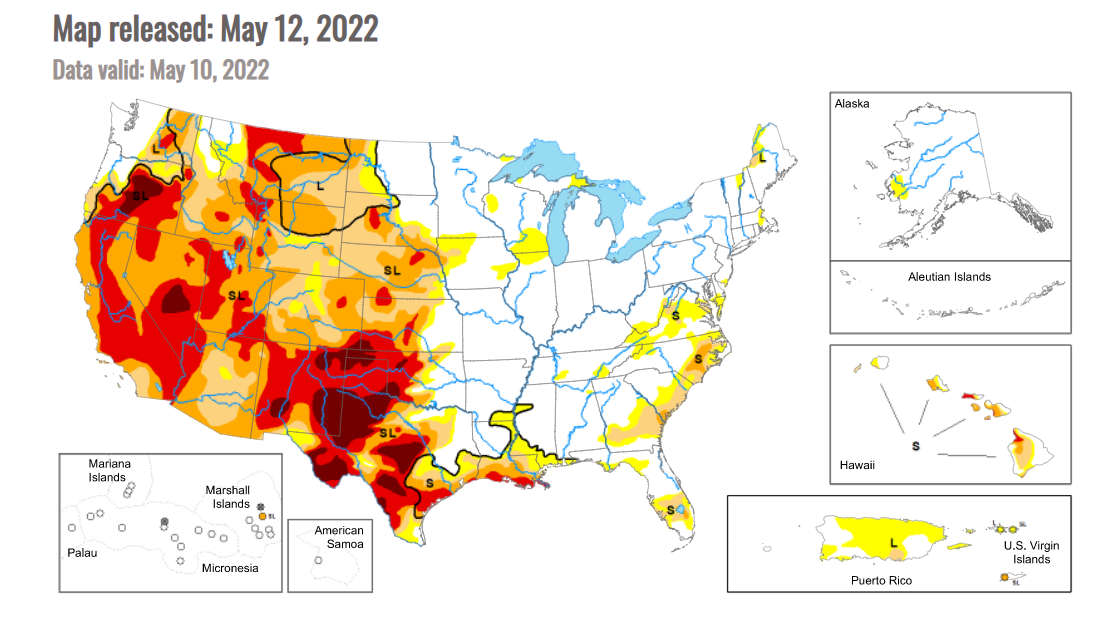Drought footprint for winter wheat gets a little smaller

Based on U.S. Drought Monitor data as of May 10, 68% of the U.S. winter wheat crop area was experiencing drought. That was down one percentage point from the previous week. USDA classified the drought as 19% “moderate,” 27% “severe,” 19% “extreme” and 3% “exceptional.”
Across HRW areas, dryness/drought covers 89% of Texas (down nearly two points from the previous week), 60% of Oklahoma (down 17 points), 72% of Kansas (down three points), 100% of Colorado (unchanged), 98% of Nebraska (unchanged), 76% of South Dakota (down six points) and 93% of Montana (unchanged).
The Drought Monitor commentary noted: “In the South, drought-related conditions improved in eastern Oklahoma and areas of northeastern Texas. In eastern Oklahoma, very heavy rainfall accumulations (ranging from 3 to 8+ inches) led to improvements on the map. However, this week’s heavy rains largely missed the western part of the state. Likewise, much of the western half of Texas was very dry combined with extreme heat, leading to further expansion of areas of Extreme Drought (D3) and Exceptional Drought (D4). Average temperatures across the region were well above normal. The most extreme heat was observed across Texas (6 to 10+ deg F above normal) with high temperatures soaring over 110 deg F in the Trans-Pecos region. Since last Tuesday (May 3), Big Bend Village (Big Bend National Park) logged the national high temperature six out of the seven days, with highs ranging from 102 to 112 deg F. Likewise, the heat wave that impacted much of the region saw temperatures rise above 100 deg in the southern Plains. The excessive heat this week continued to dry out already parched soils across much of Texas as well as in western Oklahoma where negative soil moisture anomalies (20th percentile) showed up on various soil moisture models. Moreover, 7-day streamflows at numerous gaging stations across the Hill Country of Texas and southwestern Oklahoma dipped below the 10th percentile, according to the U.S. Geological Survey. Also notable, Oklahoma saw its windiest April on record (1994-present) statewide, according to the Oklahoma Mesonet. According to NOAA NCEI, average temperatures were above normal across Texas, Oklahoma, and Louisiana with Texas logging its 11th warmest (+4 deg F anomaly) April on record.”
In the High Plains region, the commentary stated, “Improvement in drought conditions continued on the map in areas of eastern Kansas, Nebraska and eastern South Dakota where another round of storms helped to alleviate short-term deficits as well as provide a modest boost to soil moisture levels and streamflows. However, the longer-term impacts of the drought in western portions of the region are still causing impacts including areas with poor pasture and rangeland conditions and low stock pond levels.”
For other crops, USDA estimates the drought footprint at 21% for corn (down two points from the previous week), 12% for soybeans (down two points), 35% for spring wheat (unchanged) and 56% for cotton (unchanged).







